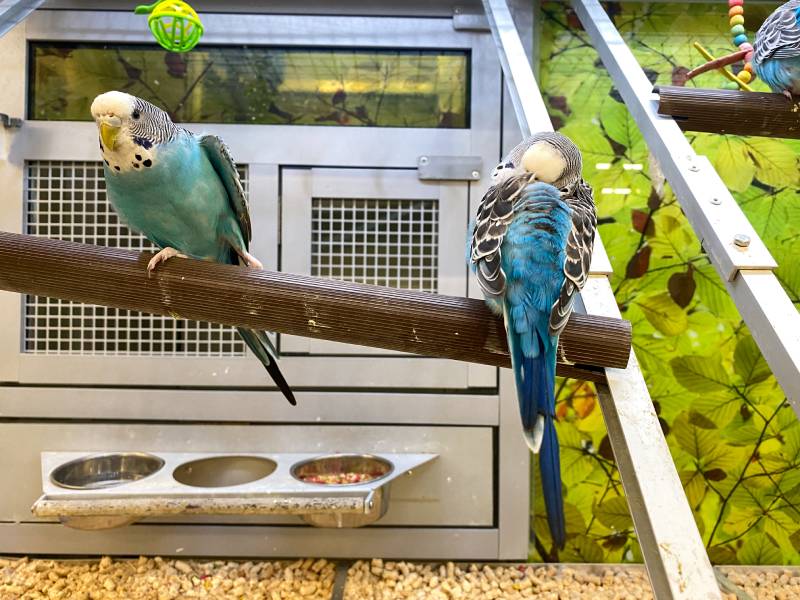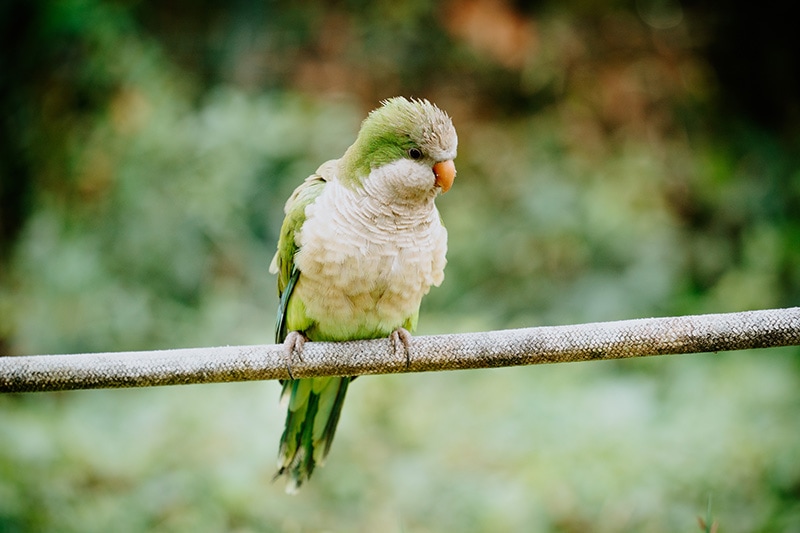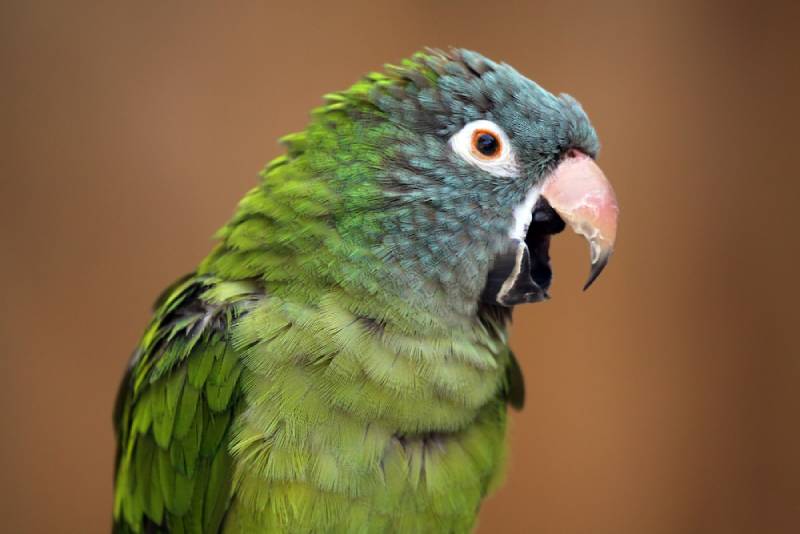Do Parakeets Need a Friend? Should They Be Kept in Pairs? Vet Approved Advice
Updated on

Click to Skip Ahead
Parakeets are a subgroup of parrots, and there are over a 100 different species of these small to medium sized birds. Budgerigars or budgies (Melopsittacus undulatus) are the most popular parakeet species kept as a pet, and in the United States are commonly referred to as ‘parakeets’. This is the species we will primarily be focusing on, however, much of the advice is similar for other species of pet parakeet.
You may have heard that these birds need to live with others so they don’t get lonely. Is there any truth to that? Parakeets are social creatures and require plenty of interaction and socializing throughout the day. If you aren’t sure how much time you will be able to spend interacting with your feathered friend, it is recommended that they are kept in pairs. Let’s take a closer look at this topic.
When Parakeets Need a Bird Mate
Parakeets are extremely social birds, so they rely on the company of a companion to stay happy and healthy throughout their lives. If they live with a human who is home all day to keep them company, a parakeet can do well without the presence of another parakeet by their side. Single parakeets are easier to train but depend on you for companionship. However, if a parakeet lives in a household where their human companions are gone each day for work, school, or other reasons, they should have a bird mate to spend their time with.

Why Parakeets Need Companionship
Being social creatures, parakeets tend to quickly get lonely and bored when they are left alone for too long or too often. While being alone for short periods or occasionally isn’t likely to do much harm, prolonged loneliness and boredom can result in the development of behavioral signs that decrease the parakeet’s quality of life.
Being left alone each day is a surefire way to cause a parakeet to develop problems due to boredom and/or loneliness.
- Feather Picking: One of the most common ways that parakeets display their boredom and/or stress is feather picking, in which they literally pick their feathers, or parts of them, with their beaks. Owners may notice small pieces of feathers missing or entire feathers plucked out and left on the floor of the habitat.
- Quietness: Parakeets are vocal characters that enjoy “talking” and dancing throughout the day. They like to serenade their companions and sing when they feel happy. Parakeets in need of companionship may become quiet and stop dancing around as often as they used to.
- Screaming: When a parakeet is left alone frequently, they tend to get bored, and boredom can also result in excessive screaming. They sing and talk for fun to begin with, so it is common for them to turn up their noise-making in an effort to get rid of pent-up energy and frustration.
- Stress Bars: Loneliness and boredom can result in parakeets developing stress, which can be displayed in the form of what’s referred to as stress bars. This is when vertical lines start showing along the parakeet’s feather shafts. Multiple stress bars may be present, depending on the seriousness of the stress.
- Hiding: Parakeets that feel bored or lonely may get depressed and try to hide away, like what some humans do while depressed. They may also cower from human family members if they are not used to regular interaction with them and become fearful.
- A Loss of Appetite: A sign of loneliness and boredom among parakeets is a lack of interest in eating. A little loneliness might result in a parakeet eating less during mealtime. If loneliness or boredom gives way to severe depression, a parakeet might stop eating altogether.
Can Parakeets Live Together in the Same Habitat?
Yes, parakeets can live in the same caged habitat in pairs, and in fact, they seem to love doing so! However, keep in mind that females tend to be more dominant than males, so they can take over a small cage and make life hectic for their mate. They can also be territorial with another female. Two compatible male budgies are often the easiest pairing, but opposite gender and two females can also work as long as the habitat is big enough. If you have a male and female pairing there will also be complications related to hormones and breeding to factor in.
Something to think about is that a pair of parakeets might ignore their human companions in favor of keeping each other company. So, they might have to be tamed and trained separately while family members interact with them, until strong bonds are developed.

A Quick Recap
Parakeets do need companionship to stay happy and healthy throughout their lives, as they’re social animals that easily get bored. If you are not able to dedicate a lot of time and attention to your parakeet they are best kept in pairs, so they won’t be lonely while human companions are away from the home.
Featured Image Credit: Fernando Calmon, Shutterstock












